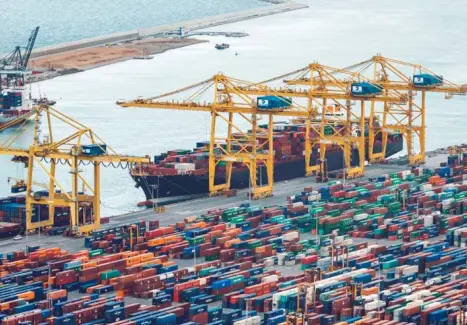When it comes to cross-border logistics, particularly in less-than-container load (LCL) ocean freight services, preventing cargo damage and delays requires attention to multiple stages of the shipping process. At Goodship, we understand the complexities involved and are committed to helping our clients ensure their goods are transported safely and efficiently.
Tips to Prevent Cargo Damage
1. Use Proper Packaging Materials
The foundation of safe transportation lies in robust packaging. For fragile items, use multi-layer cushioning materials such as bubble wrap or foam boards to wrap the products. Fill any empty spaces inside the carton with padding to prevent movement during transit. For liquid goods, ensure containers are tightly sealed and use leak-proof packaging with clear labels to avoid spills and contamination.
2. Optimize Cargo Loading
How goods are arranged inside the container plays a critical role in preventing damage. Place heavier items at the bottom and lighter ones on top to avoid deformation of lower cargo due to pressure. Liquid goods should always be positioned below dry goods to minimize the risk of polluting other items in case of leakage. For goods that may emit dust, moisture, or odor, take isolation measures such as covering them with tarpaulin or plastic films. Additionally, cover any sharp edges or protruding parts to avoid damaging neighboring cargo.
3. Inspect the Container
Always check the condition of the shipping container before loading. Ensure there are no structural damages, holes, or water leakage issues. A thorough inspection guarantees a secure environment for the goods throughout their journey.

Tips to Avoid Shipping Delays
1. Choose a Reliable Freight Forwarder
Partnering with a trustworthy and experienced freight forwarder is key to timely deliveries. At Goodship, we pride ourselves on our industry expertise, transparent communication, and dedication to service quality. We provide accurate sailing schedules, real-time cargo tracking, and proactive problem-solving to keep your shipments on track.
2. Prepare Documentation Accurately
Incomplete or incorrect documentation is a common cause of customs clearance delays. Ensure that all required documents—including commercial invoices, packing lists, and bills of lading—are accurately completed and submitted on time. If your goods require special permits or certifications, plan ahead to avoid last-minute complications.
3. Book Space in Advance and Stay Informed
Since LCL shipments share container space with other cargo, it’s essential to reserve space early to secure your spot on the vessel. At Goodship, we help our clients plan their shipments based on updated sailing schedules and factor in potential disruptions such as weather conditions or port congestion. Always allow buffer time to accommodate unforeseen delays.
At Goodship, we offer end-to-end ocean freight services designed to meet diverse logistical needs. Whether you're shipping fragile items, hazardous materials, or general merchandise, our team ensures that every shipment is handled with utmost care and professionalism.
By following these guidelines and working with a dedicated partner like Goodship, you can significantly reduce the risk of cargo damage and delays, ensuring a smooth and efficient supply chain.

 Good
Good
 Sep 09 2025
Sep 09 2025


 Home
Home





 Email:
Email:
 Address: 216, Building A1, Fuhai Industrial Zone, Fuyong Community, Fuyong Street, Baoan District, Shenzhen, China
Address: 216, Building A1, Fuhai Industrial Zone, Fuyong Community, Fuyong Street, Baoan District, Shenzhen, China



